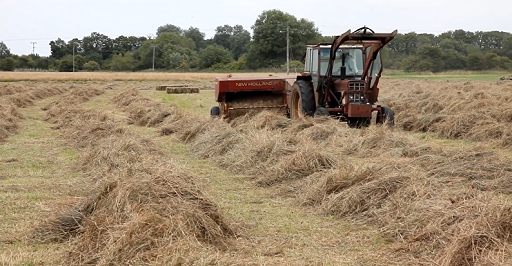3 Floodplain farming for the future: meadows
Watch the following video.

Transcript: Video 1 Floodplain farming
The Domesday Book (1086) records meadows on floodplain as being both widespread and of greater value per acre than arable land. They should be seen as a future solution to food security, and to the climate and biodiversity emergencies. Floodplain meadows are a pragmatic land-use option for farmers in floodplains, because they can support livestock production without the need for artificial fertilisers and pesticides. They typically produce five or six tonnes of hay per hectare, in good years up to eight tonnes, in addition to providing some grazing.
Floodplain-meadow hay meets the nutritional needs of most livestock and deserves better recognition as a valuable, low-input, nature-friendly fodder crop. Recent research suggests a second cut of hay in September, as part of a double-cut system, is of comparable nutritional value to a mid-summer crop, as it is new growth being harvested
They benefit from flooding, build soil fertility naturally, are productive during droughts, resilient to the dynamism of floodplains and deliver high biodiversity. They therefore allow food production on land that is less viable for other crops.
Activity 2
If there was a series of dry years with no flooding, how would this affect the yield of hay from floodplain meadows?
Discussion
Floodplain meadows tend to be more resilient than other grasslands in the face of drought, so yields would initially remain good. If the absence of floods persisted over a run of years however, then the lack of sediment deposition would lead to a reduction in available nutrients and ultimately to a reduced hay yield.
